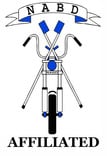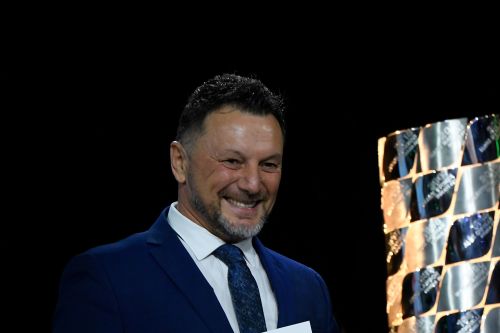Motorcycling is addictive. Once you try it, chances are almost 100% you will get on it sooner or later. However, that adrenaline injection a motorcycle ride gives you sometimes blurs the fact this is not the safest activity on the world.
Luckily, you can choose between thousands of motorcycle gadgetries and apparel that promise a safer, but also easier and cooler ride. Some of them are only nice-to-have, while you can add significant value to each of your rides if you pick the useful ones.
If you are searching for ways to elevate your motorcycling experience, then you are in the right place. Today we will split the bill – 50/50 and talk about rider and bike accessories for motorcycle riders. These must-have accessories for motorcycle riders will provide huge benefits to the overall experience and make every time you hit the road more than awesome.
Crash Protectors
No motorcycle rider likes to think about crashing or having an accident, but this is a highly likely scenario, especially among incautious younger riders. You want to protect yourself from injuries in the first place, but your motorcycle from damages as well. What is more, replacing hard and plastic parts break the bank, so that this may be an additional reason to get a crash protector. Even sliding along the tarmac at a low speed may cause thousands of dollar worth of damage.
Frame sliders, swingarm spools, fork sliders, and bar ends fall into the category of crash protectors and can minimize the damage and the worry. This accessory is undoubtedly a good investment as it alleviates crashes. The crash protector takes some of the impacts on in case you drop your bike. One thing to bear in mind is that you want to get a compatible crash protector for your bike’s model, as this is not the type of one-size-fits-all motorcycle accessories. You can get a much greater benefit and protect your two-wheeled favorite for just a few bucks.
Phone mount
We want to stress out phone mount as a motorcycle can come in very handy, but you should focus on the road while being in the saddle. That means this is a useful gadget, but not for texting while riding on a curvy road. However, if you are a bit of explorer and like to head off to the unfamiliar terrains, GPS would be what you exactly need.
You certainly don’t want to roam around but follow the planned route, and the phone mount will be your handy assistant. On the other hand, you will be able to see if someone tries to contact you. In this case, you should get off the road and make the call. Combining this gadget with a
Bluetooth headset is even greater, as it opens even more options for the rider. Yet, we will repeat that this is a great and very useful motorcycle accessory, but if the temptation of staying connected is too strong, we will give you an awesome idea in the following chapter.
Bluetooth helmet
It is really hard for some of us to keep our hands off the phones. Staying in touch with the world has become addictive, but still, essential. As we already mentioned, texting is definitely not a safe idea while riding. There is no reason why you would want to put yourself in a life-threatening situation and experiment around. Yet, a Bluetooth helmet will be your handy back up.
Helmets nowadays have built-in Bluetooth and are convenient and safe to use. It will give you the option to communicate with your fellow riders while being on the road, as you stay in touch while still keeping your hands on the motorbike.
Any other conventional helmet will, of course, protect you from harm, but a Bluetooth helmet has a couple more awesome features besides the protective one. This means it will provide you a map replacement, safe communication with other riders, and the joy of listening to clear music.
Tool Kit
Did you really think we would skip the tool kit on the list of must-have accessories for motorcycle riders? Even the bare essentials tool kit opens up great solutions for road situations. The great thing is that it won’t take much space and you can store it under the rear seat. Most of the tool kits come as small pouches or in handy roll-up cases, so you can pick whatever works best for you. Additionally, you can tailor it to your needs, and pre-pack the kit if needed.
With time, you grow fonder with your motorcycle, and you will know what exactly makes it tick. Getting in touch with certain repairs will gradually make you of a mechanic, and that is why you need a tool kit while being on the road. This way, you will be able to perform the basic roadside repairs and maintenance. Not only you will get the job done, but this will also save some money, which is a win-win situation.
Reflection
Visibility of your bike drops significantly after the sun goes down. We suppose you already know how important it is to be visible on the road during the night rides. Obviously, you need something to help you perform this. Strategically placed reflection – reflective plate bolts and reflective tape will be your friend out there as it will increase nighttime visibility of your motorcycle. If you like it custom – that is not a problem as well, as you can cut out your own shapes.
Conclusion
As you already know the basics of motorcycling, we wanted to present some new, cool ideas for bikers. These handy gadgets are mostly affordable, but what is more important – may save your life and improve your driving experience. You want your bike in good working order, but you want to equip yourself with a couple of accessories as well. Options are endless when it comes to must-have accessories for motorcycle riders, but it all depends how much money you are willing to spend.
The first way around a small budget for your Motorcycle touring, is to take out a small loan which will enable you to enjoy the trip, without having to save up for a long time. Read more here.
article supplied




